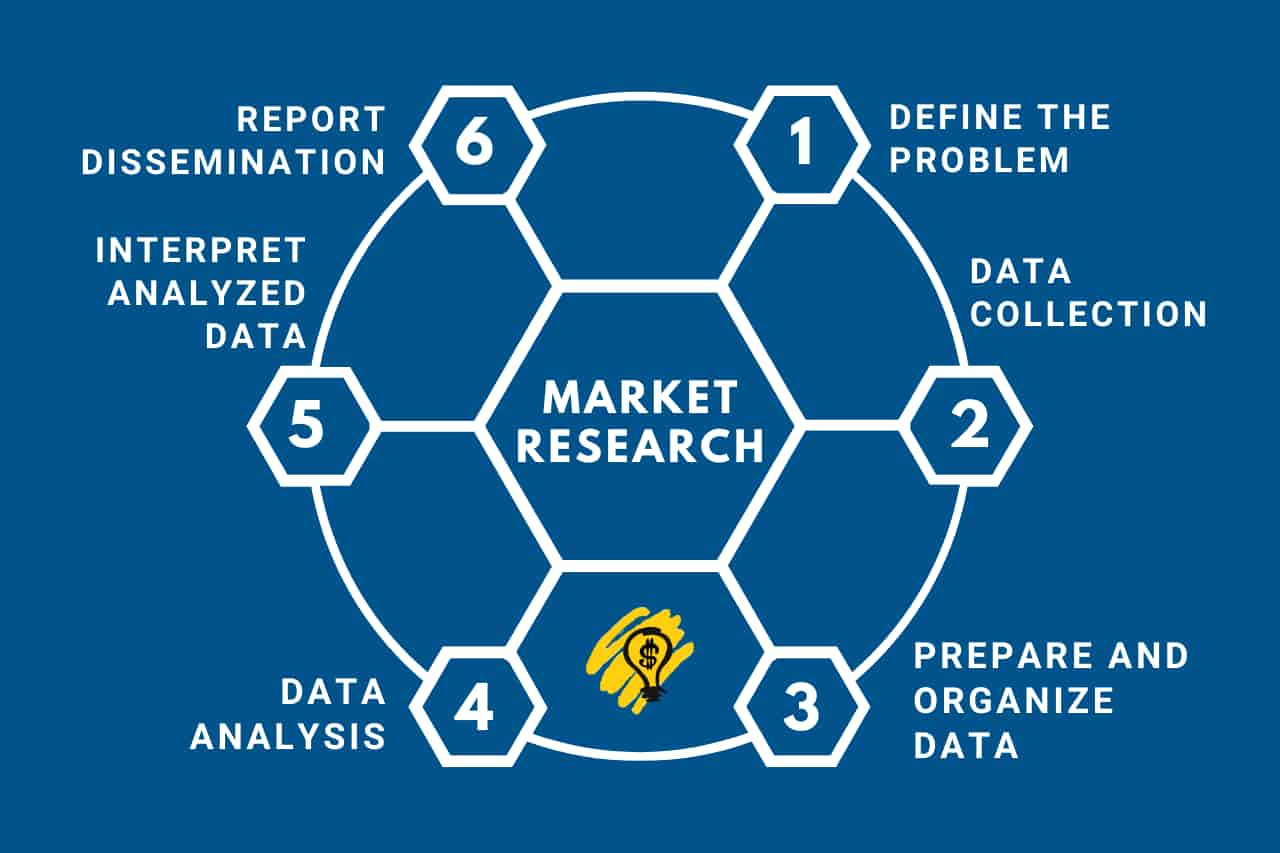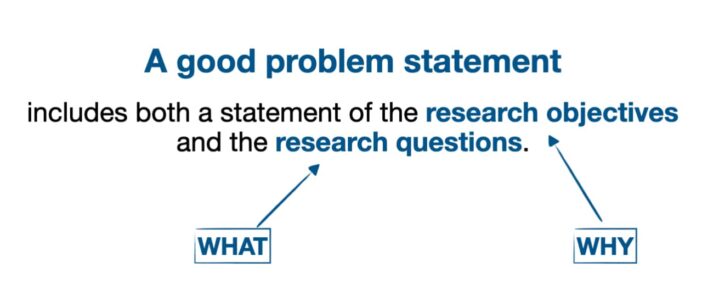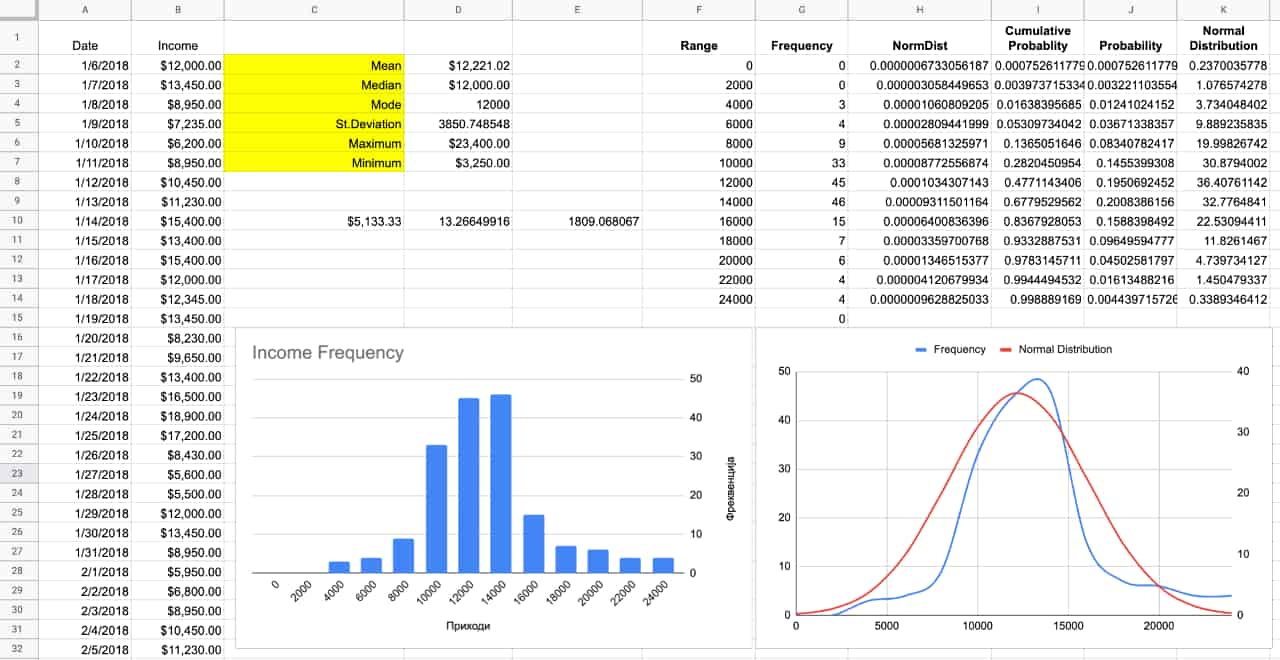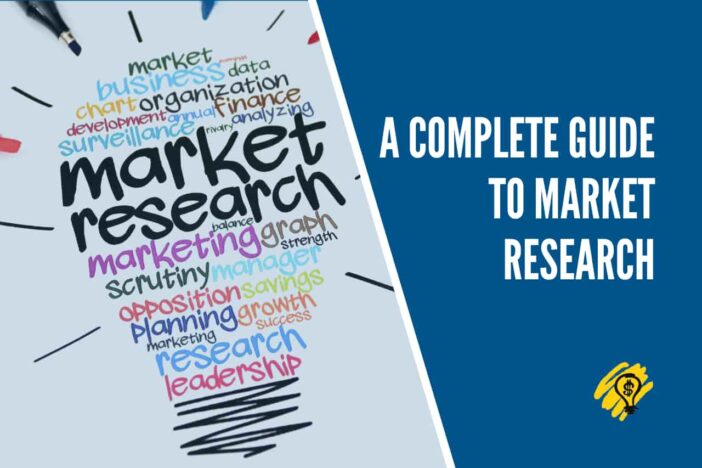All companies exist in a specific type of market. The market contains current or potential customers, competitors, and other market players. It is a complex environment that you must research continuously. Because of that here I would like to give you the complete guide to market research you will need to conduct.
Marketing has become one of the most crucial parts of running a company. From developing promotional campaigns and content to identifying new products and services, it is one of the primary reasons businesses continue to grow. Market research is one of the most essential marketing tools, and it’s also one of the least understood.
If you want to know your target audience’s needs, wants, likes, dislikes, wants to purchase or not, you need market research. It can help you identify new market niches, get customer feedback, identify customer needs and trends, determine the best pricing strategy, and understand competitive forces within the market.
You need to understand why customers are buying specific products and services from you or your competitors. There are many different reasons and some of them buy for one reason, another for another reason, and so on. You will learn more about them if you use market research.
This article will help you understand the benefits, process, and various information sources you can use for market research. But, before we dive into the nitty-gritty details of conducting market research, let’s define the terms, so you know what you’re getting yourself into.
Table of contents
Introduction to Market Research
Market research is essential for any business that wants to offer products or services in a specific market or market niche.
When I say customers, I think about customers as companies and customers as individuals. Consumer market research will analyze the buying behaviors of individual people while business-to-business market research will analyze the buying behaviors of other companies.
As an entrepreneur, you must know everything about your customers, what they want, what they believe, their needs, how they can meet those needs, and how your company can help them meet those needs.
📖 Remember that…
Market research will allow you to learn more about past, current, and potential customers and with that understanding, you can make better decisions related to satisfying their needs.
What is Market Research?
Market research is a systematic process of collecting information, data analysis, interpretation, reporting, and visualization about your customers and competitors to help your business make smart decisions. It is a complex process to get the right info about your market – before you do anything else.
One of the most important questions for all businesses is how many people are actually interested in what you’re offering. Using market research you will determine the size of your market and the best ways to reach potential customers. It will also provide you with insight into what types of offers will motivate and retain your audience.
First, it is a collection of activities with a final purpose to bring you an understanding of your customers’ behavior in a particular market where your business operates.
Second, it is the processes that take information from the market and after that extract specific data related to current and future customer behavior in order to enable you to prepare an effective marketing strategy.
Despite customers, market research as a process will also analyze your competitors in a specific market. Another important thing that is covered by research is the effectiveness analysis of small business marketing campaigns.
Questions to Answer With Market Research
So, when you approach market research you will need to answer four categories of questions. They are related to your current and potential customers, your current or future offerings, promotion, and your current or future competitors. Here I will share 68 questions that can help you in conducting your market research process:
Customers
- Who are my prospects?
- Who will be my target customers?
- What is their demographic information?
- What is my target customer’s personality profile?
- Where can I find my target customers or ideal clients that will buy from my business?
- What are the biggest problems I see in my target customer base?
- What is the best way to find customers?
- How do I know what my customers want?
- What do my customers want from me?
- Also, what are their pain points?
- What problems do they face?
- How do I solve their problems?
- What obstacles do my customers face right now that I help them solve?
- What can I offer my customers they don’t already have?
- How many people will my business reach?
- Or, how much are these people spending on similar products?
- How often will those customers purchase specific products or services?
- What does the average customer spend on my product or service?
- What are customers’ perceptions of my company?
Competitors
- Who are my biggest competitors?
- What do they offer?
- What are my biggest competitors doing?
- Or, what is the competition’s market strategy?
- What is my competition doing that’s working?
- How do my main competitors use promotional campaigns?
- What are my competitors’ strengths and weaknesses?
- What is the market share of my competitors?
- Also, what are my competitors’ strategies to gain market share?
- What is the total offer of your competitors’ products and services?
- What is the price of the specific product or services that my competitors offer on the market?
- Where do I stand today with my competitors?
- What’s my competitive advantage?
Offer
- What benefits will my customers get if they buy from me?
- What is my unique selling proposition?
- Also, what are my core competencies?
- What can I offer my customers that they can’t get anywhere else?
- What is my product’s value proposition?
- Or, what will be my main differentiators?
- How can I make my product/service better?
- What should my customers expect from me?
- Do I offer anything extra to my customers?
- Do I offer something unique?
- How do I keep my customers happy?
- How can I create a sense of urgency and offer the best value?
- What about price rates, or how much should I charge for my products and services?
- What is my pricing strategy?
- Or, what price range is acceptable?
- How can I effectively distribute my products and services?
Promotion
- Where should I spend my promotional resources?
- How will people hear about me?
- How will I promote my brand?
- What are my customer acquisition channels?
- How will I know that my customer acquisition strategy is working?
- How will my company communicate my brand with my target customers?
- Also, how can I overcome obstacles to reach customers?
- How will I engage my target audience?
- How do I create an engaged community?
- Or, how will my audience interact with me?
- How can I build trust?
- How can I leverage social proof?
- Also, how can I leverage customers’ emotions?
- How can I add a human element to my promotional tactics?
- How can I create a sense of exclusivity?
- Or, how do I retain my customers?
- How do I get my customers to recommend me to their friends?
- How will my company be found by target customers?
- What about the success, how will I measure the success of my promotional efforts?
- How do I know if I need to change my marketing strategies?
📖 Remember that…
Market research is the process of objective identification, collection, analysis, and distribution of information. This information will assist you in the decision-making process related to problem identification and finding solutions and opportunities in the market. The task of market research is to provide you with important, accurate, reliable, valid, and current information in real-time.
What are The Benefits of the Market Research?
Why should you care about market research?
It’s a simple question, but still, the answer is anything but simple. Most small business owners assume they know what their market wants and need. After all, they talk to their friends and family, search online for feedback and opinions, and rely on the advice of marketing experts to guide their decisions.
Research is a vital component of any marketing plan, and the reason why market research is so important is that it is the one thing that will give you a clear picture of the market you want to serve. Also, it will give you a clear picture of who your ideal customer is and where to focus your attention regarding designing and developing your product and promotional campaigns.
Simply, you don’t want to rely only on your gut instinct and past experience. In such a way, you will miss out on potentially lucrative opportunities. Market research can help identify new markets and opportunities, uncover competitive threats, and help you understand customer behavior—all of which will benefit your business.
So, what are the biggest benefits?
There are many benefits for entrepreneurs and small businesses when it comes to the market research process. Here are some of them:
- The more time you invest in market research, the less money you spend on customer acquisition and the more time you have to focus on building your brand and selling your products and services. Market research will save you from making costly mistakes.
- Excellent market research and quality decision-making based on the facts will ensure not only the survival of your company in the market but also the growth you want to achieve.
- Also, you can identify opportunities for your company and at the same time will prevent threats that will come from the market.
- You will always know and constantly will learn about your customers, your competitors, and your promotional efforts.
- You can easily succeed in lowering risks about new products or services that you plan to introduce in a specific market. It is because these products and services will be arranged especially for the real market needs.
- This process will give you all the basic marketing benchmarks that you must complete. In such a way, you can evaluate your efforts and constantly improve the overall marketing strategy for your company.
Market Research Process
The basic process of market research can be explained in six different stages:

1. Research purpose, or define the problem
The market research process starts with defining the problem.
A “problem” is not necessarily something seriously wrong with a current state that needs to be improved now. A problem could also mean you are interested in an issue where finding the correct answers might help improve an existing state. So, we can define a problem as any situation where a gap exists between an actual and a desired ideal state.

When you define the problem, you start with a statement like, “We are looking to improve our marketing strategy,” or “our current website doesn’t adequately meet our customers’ needs.” You can get even more specific, but you should focus on finding the root cause, not on getting into a detailed discussion about all of the options available to solve the problem. When you’ve nailed down the root cause of the problem, you’ll be able to build a solution around it that fits both the business and the customer’s needs.
💡Example
Traditional marketing techniques do not bring the desired results.
One of the first things you should do after deciding on a market research topic is to think through why you want to conduct market research. What questions do you need to answer to move forward? How long will it take to answer those questions? What tools will you need? Do you need a team member who has expertise in that area?
A good problem statement includes both a statement of the research objectives and the research questions.
A problem statement addresses both the “why” (the specific goal or purpose of the study) and the “what” (the central research question or a set of research questions) of the research. We have already covered more than 60 questions you can use for your market research purposes in the previous part.

2. Data collection
Now that you know the problem and problem statement, it’s time to start collecting data.
At this point, you’ll have a better understanding of the market problem.
While it seems like an easy step, gathering and analyzing information is a bit more complicated than you might think. You’ll need to plan the whole thing out ahead of time to get the most out of the project and maximize your ROI.
At this stage, you’re looking to collect as much information as possible about the target audience to ensure that you’re presenting yourself and your product in the most persuasive way possible. Data collection includes identifying demographic attributes (like age, gender, income level), geographic location, language, and interests. You’ll also look into the competition (how big is the market?) and what kind of advertising your potential customers may already be exposed to (such as direct mailers, print ads, etc.)
3. Prepare and organize data
In most cases, you will collect a large amount of data that will need to be organized and analyzed. There will be many hours of interviews or focus groups, many pages of notes, and different documents that you get during the data collection. So, one of the first steps, after you collect the data, is to prepare and organize the data for analysis.
Some of the options you have when preparing data for analysis are to take notes during interviews or record the interview for later analysis.
Recording the interview is a better choice because you can be focused on listening and responding to the subject during the interview process without any possible distraction. Recording the research process with the participants provides complete data for analysis.
The note-taking approach also may result in an increased focus on important things because you will note only those answers recognized
4. Data Analysis
The market research process involves both quantitative and qualitative data analysis techniques.
Quantitative techniques involve collecting hard numbers, such as how many people clicked on your website, how many people called your phone line, how many people bought your product, and how many people bought your service.
Here is an example of quantitative research using data from sales records. We can easily calculate the mean, median, mode, and standard deviation like basic statistics. But, we can also calculate probabilities.

But, what about things that are not under our control, like customers, competitors, or other partners? In that case, we can not use only a quantitative approach but also qualitative research that will be important to our market research.
Qualitative analysis is a technique that doesn’t have numbers associated with it but is based on interviews, surveys, and focus groups. It is a technique that uses words and images instead of numbers to collect and analyze data.
We need to talk with customers about the quality of our products, our total offer, brand recognition, and customer support… So, much of the data collected will be analyzed through qualitative research techniques.
5. Interpret analyzed data
How do you interpret your findings? This is the fifth step in the market research process, and it’s critical for your company. If you don’t know how to interpret market research, you’re simply shooting in the dark. You might make wrong assumptions about your audience, which leads to ineffective campaigns. To avoid this, take the time to read through and understand the data.
When conducting market research, you usually collect several data sources and then analyze them to draw meaningful conclusions. Sometimes you can find out that there is no real correlation between two variables based on your research questions and hypothesis. However, you will still need to analyze the two data points to gain further insights. When doing this, you should ask yourself these questions:
- How big is this trend/problem?
- What is the likely impact?
- Is there any connection between the two?
- What is the best course of action?
This part of the market research aims to interpret the research results of the research questions. Many people often skip the other process steps inside the final report and move straight to the research conclusions. You need to include the following sections here:
- The main findings of your market research,
- The implications of these findings,
- Recommendations for implementation and a cost-benefit analysis of these recommendations and
- The limitations of your research and suggestions for future market research following up on this project.
6. Market research dissemination
This is the final product of your market research and you need to disseminate it to all persons in your company that will need to use the findings in their decision-making process.
Information Sources for Market Research
Many companies and online services are dedicated to providing information about your target market. Some are paid for subscriptions, others are free, but either way, they provide valuable data that you can leverage in your market research process. As an entrepreneur or small business owner, you may be wondering how to pick the proper market research source.
Simply, you need to collect information from all available sources to help you formulate a good marketing plan for your brand.
In this process, the second stage (data collection) is one of the most important and also the hardest stage to complete. The quality of the research in large part will rely on the quality of the data collected from the market. Information about the markets can be covered by different sources.
Here, I will mention some possible sources that you can use in order to collect the required data from the market:
1. Current customers
Collecting data from the current customers will depend on your own creativity. You can collect data simply by asking for customers’ feedback. Also, you can collect this data from your sales team, which is in continuous contact with your customers. Information received directly from your customers is one of the most valuable information for you. This information will bring you a really good background for your research. Your current customers also can tell you what your strengths are and more importantly your weakness.
Ask people if they have any recommendations for you.
2. Business magazines
Business magazines are valuable sources of business information that can be useful for the purpose of your market research. In magazines, you can find already finished analyses that can be valuable for your business. You can find information about your customers, competitors, or different marketing campaigns in the industry. Also, you can read about industry trends,
3. Surveys, interviews, and focus groups
Surveys, interviews, and focus groups also can be used to collect information about individuals and their opinions about the different products on the market. This is very valuable information for every business. You can use customer surveys, random interviews, feedback sheets, phone surveys, web-form surveys, a survey in email campaigns, and so on.
4. Government agencies
Government agencies collect the most important statistical information about markets. Also, they give some type of forecasting related to the specific markets. Contact these types of agencies and ask for information about your target market.
5. Internet
The internet is an unlimited source of information. The amount of data available online means there are lots of ways to conduct market research. The most basic approach is to search for information about the industry you want to enter and then evaluate that data to see if it matches what you know about the industry.
Google is a good starting point to see what an internet user searches for. You can also use Google’s trends which can give you valuable information about trends in the search engine. Search for keywords in which you plan to promote your business or that describe your business. Try to use those keywords throughout your website and on your landing pages.
On the internet, you can find various already finished analyses that you can use for the purpose of your research. Read more about how to use google search data to improve your business offer.
6. Social Media
Be active on all your social media profiles. Post pictures and videos of your company and its products. Ask questions that you can use for your market research purpose. Make sure to tag your company or brand in the posts. Use hashtags related to your brand, so you can easily follow when someone talks about your company.
As you can see, required and need information can be everywhere around you. The key point is simply to start noting information and use it for your market research and decision-making process.
Conclusions
In conclusion, this guide walks through how to conduct market research systematically.
The best way to get started is to ask questions and conduct informal interviews. This helps you understand the problem to better address it. It also helps you identify your target audience.
Market research is all about learning. There’s no shortcut. You need to read, write, and speak to people to understand the trends and preferences of your potential buyers. This can take many forms. For example, you might interview your target audience, conduct focus groups, survey your current customers, or conduct a competitive analysis. Once you’ve learned what your customers want, it’s essential to translate this information into a value proposition for them.
If you want to succeed in your business, you’ll need to know what works and what doesn’t. That’s why market research is so important. It will tell you if people like your product or service, and if they don’t, it will let you know why. It will also tell you what would improve your product, service, or brand in ways you couldn’t know on your own.



